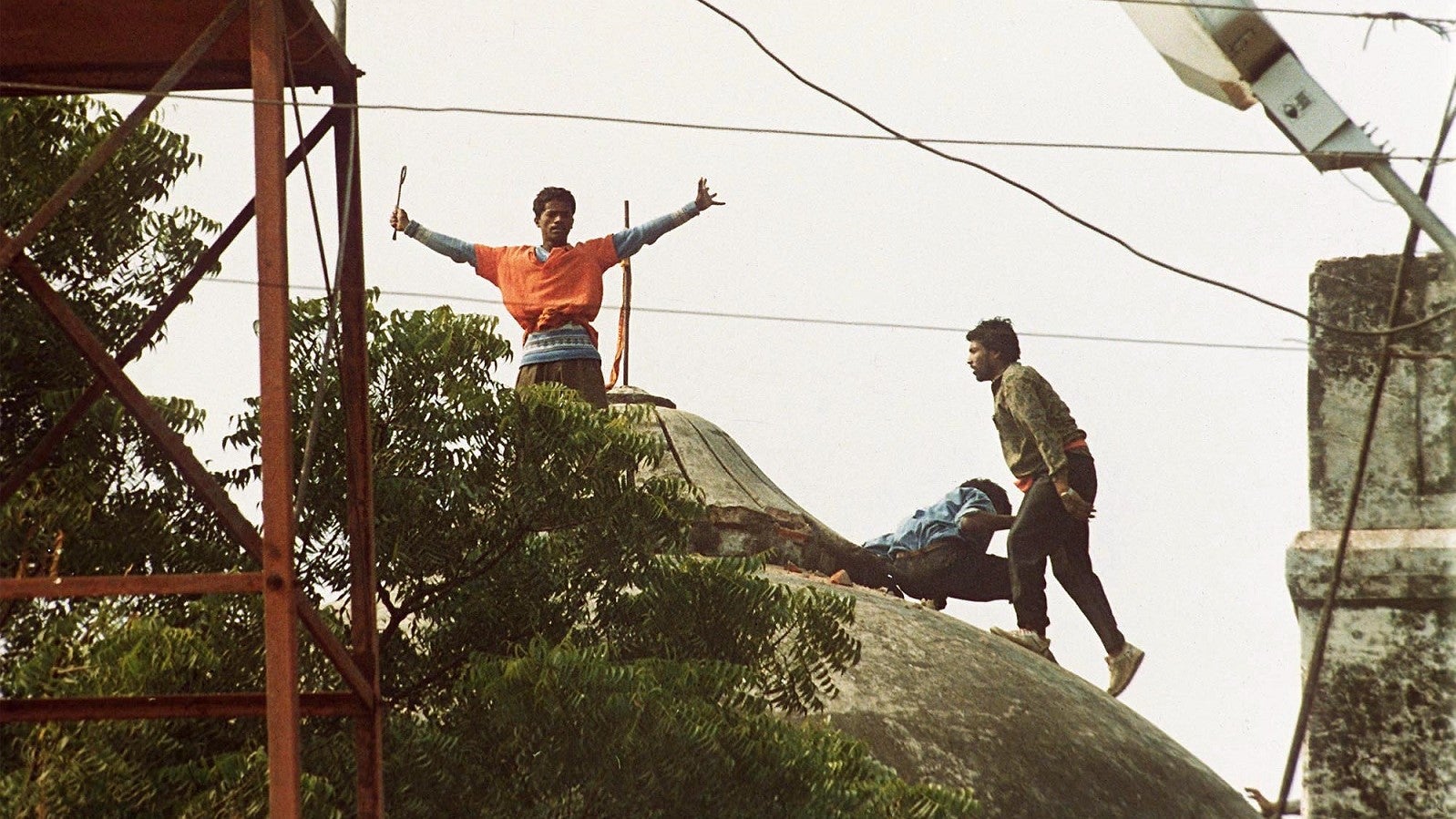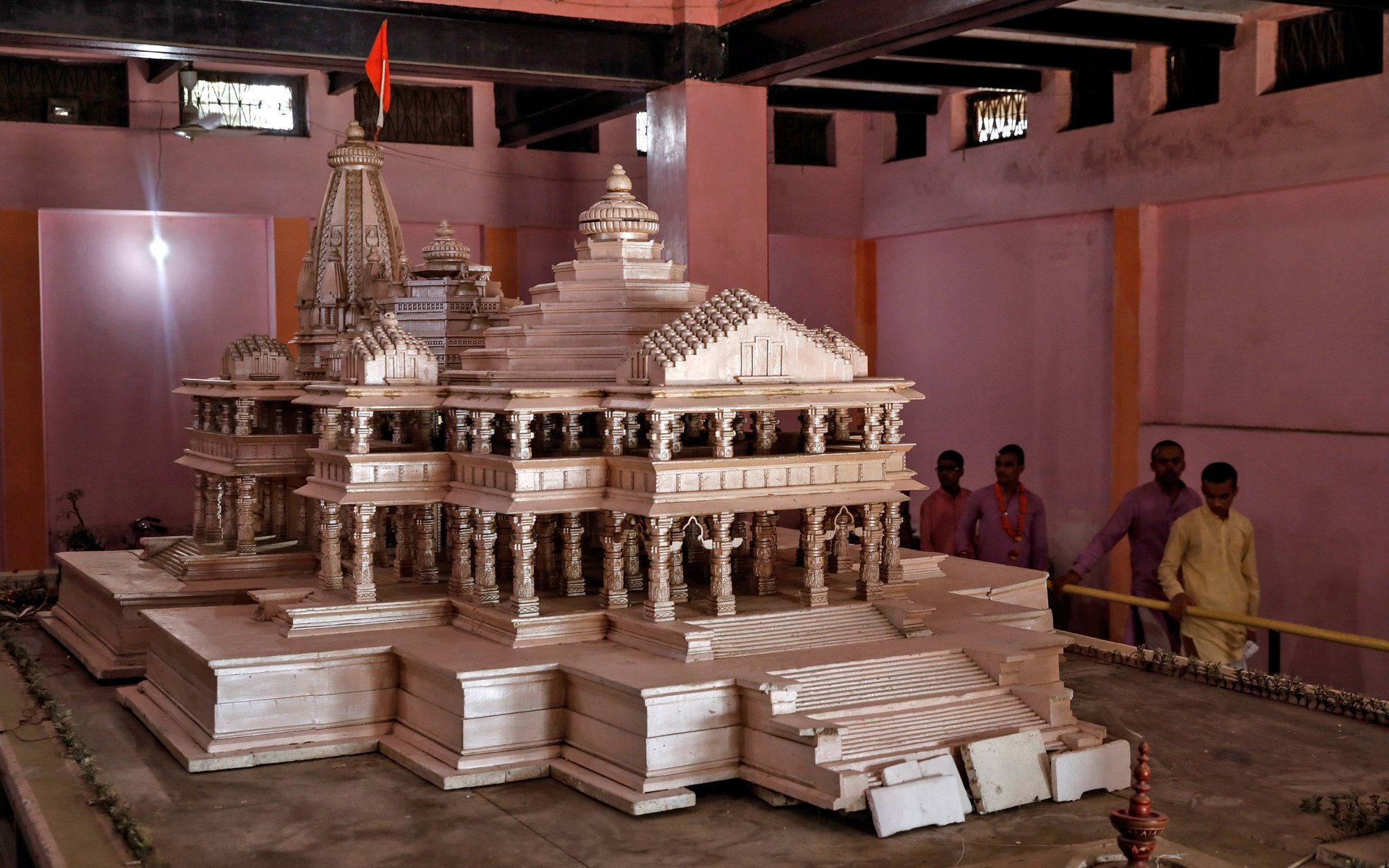A timeline of the Babri-Ayodhya case—from land dispute to criminal conspiracy
A special court has found today (Sept. 30) that the Babri mosque demolition in 1992 was not pre-planned. This is the latest criminal court verdict in a nearly 150-year-old land dispute, which led to several Hindu-Muslim riots in the country over the past three decades.


A special court has found today (Sept. 30) that the Babri mosque demolition in 1992 was not pre-planned. This is the latest criminal court verdict in a nearly 150-year-old land dispute, which led to several Hindu-Muslim riots in the country over the past three decades.
In the judgment today, the court found that all 32 accused, which included former deputy prime minister LK Advani, are not guilty of spurring kar sevaks—Hindu nationalists who sought to perform religious rituals at the site—into demolishing the 16th-century Muslim place of worship.
The court found that members of the Vishwa Hindu Parishad, an affiliate of the right-wing Rashtriya Swayamsevak Sangh, and politicians from the Bharatiya Janata Party were only trying to protect the structure because idols of Hindu god Ram were inside the mosque.
While photojournalists had captured the rousing speeches and the frenetic activity around the erstwhile mosque on and around Dec. 6, the court found no evidence that directly implicated the 32 accused.
The case, though, dates back to pre-Independence India. Here is a timeline of the thorny dispute, which shook the foundations of secular India, like no other event in living memory:
1528-29: A mosque is built in Ayodhya by Mir Baqi, a general of the first Mughal emperor Babur. Hence, the name Babri Masjid.
1853: The first recorded violent conflict between Hindus and Muslims over the mosque takes place and the ruling Nawab of Awadh (a corruption of Ayodhya), Wajid Ali Shah, brokers peace. Merely four years later, Hindus and Muslims would unite to revolt against the British East India Company.
December 1949: Two years after India’s independence, an idol of Lord Ram mysteriously appears inside the Babri Masjid. Police lodge a case and the city magistrate seizes and locks the property.
January 1950: Gopal Singh Visharad, the first plaintiff, files a civil suit in the Faizabad court in Uttar Pradesh, praying that the mosque’s premises be unlocked for worship of the idols.
December 1950: Paramhans Ram Chandra Das, a Hindu ascetic, files a lawsuit seeking permission for “worship and darshan (of the idols) without any check, obstruction or interference.”
February 1961: The UP Sunni Central Waqf Board, the umbrella organisation of the Sunni sect of Muslims, claims the mosque as its property and challenges the suits filed by the Hindu side.
January 1986: A prayer is filed before the Faizabad local magistrate for opening of the mosque’s gates. Till then, a priest was allowed to perform worship only once a year.
January 1986: Under pressure from religious clerics, prime minister Rajiv Gandhi promises to reverse a supreme court ruling that granted alimony to Shah Bano, an elderly Muslim divorcee. The move to uphold the Muslim Personal Law is seen as an appeasement of the community, evoking the ire of many Hindus and fanning religious rivalry.
February 1986: The Faizabad court orders the opening of the locks, paving the way for Hindus to access and worship at the site. Eager to deflect attention from the Shah Bano announcement, and pacify Hindus, the Rajiv Gandhi government complies with the court order with great alacrity.
1986 Ali Miyan, president of the All India Muslim Personal Law Board (AIMPLB), leads the formation of the Babri Masjid Action Committee (BMAC).
January 1987: State-owned broadcaster Doordarshan starts airing the Ramayan serial in 1987, departing from its earlier policy of refraining from airing religious programmes. This time, the Gandhi government’s decision is seen as Hindu appeasement. The serial kindles the collective imagination of Hindus at large. Ashok Singhal of the extremist Vishwa Hindu Parishad once said the airing of the mythological was crucial in inspiring recruits to his organisation’s movement to build a temple.
October 1989: All cases related to the title suit pending before the Faizabad court are transferred to a special bench of the Allahabad high court.
September 1990: Lal Krishna Advani, then president of the BJP undertakes a Rath Yatra (chariot procession) starting off from the ancient Somnath temple in Gujarat and heading for Ayodhya, seeking to build a temple at the disputed site. Thousands of kar sevaks join Advani in a show of religious and political might. The yatra leads to communal violence and riots across India.
December 1992: Prominent BJP leader Atal Bihari Vajpayee addresses kar sevaks in Lucknow, the Uttar Pradesh capital. In a provocative speech, he says, “Ab bhajan, kirtan karne ke liye baithna padega aur nukilee patthar par to koi baith nahi sakta, zameen ko samtal karna padega.” (In order to offer prayers, kar sewaks will have to sit on floor and how can someone sit on sharp stones. One will have to level the ground). This is seen by many as alluding to razing the Babri mosque.
December 1992: A day after the speech, over 150,000 gather at Ayodhya following VHP’s announcement to perform a kar seva next to the mosque. As senior leaders address the gathering with a call to build a temple at the site, the mob turns violent. Kar sevaks demolish the Babri mosque in the presence of top BJP leaders, including LK Advani, Murli Manohar Joshi, and Uma Bharti. Addressing a press conference in 2017, Bharti said, “I am proud to have been associated with the Ramjanmanhoomi movement.”
According to reports, the then prime minister PV Narasimha Rao failed to act on inputs by India’s intelligence bureau (IB) that hinted at a conspiracy to destroy Babri Masjid.

December 1992: Rao’s government sets up a commission under Justice Manmohan Singh Liberhan, then a sitting judge of the Punjab & Haryana high court, to investigate the events and identify the people behind the outrage.
1993: The central bureau of investigation (CBI) charges Advani and 19 others for incitement.
October 1994: The supreme court rules that a mosque is not integral to Islam.
May 2001: A special court drops criminal conspiracy charges against top leaders, including Advani.
April 2002: Allahabad high court begins the title suit hearing.
2003: The archaeological survey of India (ASI) undertakes a study on the request of the Allahabad high court. Its report suggests the presence of an older temple under the mosque. The findings are disputed.
September 2003: The CBI court rules that seven Sangh Parivar leaders should stand trial for inciting the Babri Masjid demolition. Advani, now the deputy prime minister of the country, is spared trial.
June 2009: The Liberhan Commission submits its report. It holds 68 people guilty of demolishing the mosque. This includes Advani, Murli Manohar Joshi, Kalyan Singh, Uma Bharati, and Ashok Singhal.
September 2010: The Allahabad high court divides the disputed land into three—one part each going to the parties on the Hindu side and one to the Muslim side.
2011: All three parties—Nirmohi Akhara, Ram Lalla Virajman, and the Sunni Waqf Board—appeal against the verdict in the supreme court.
May 2011: The SC stays the high court verdict and orders status quo.
April 2017: SC revives trial against Advani, Joshi, Bharti, and others.
August 2017: The apex court decides to start the final hearings on Dec. 5 and directs the UP government to translate the case documents running into over 9,000 pages within 12 weeks. The documents include scripts and records in languages such as Pali, Arabic, Persian, Gurumukhi, and Urdu.
Jan. 25, 2019: SC reconstitutes a five-member constitution bench to hear the case. The new bench comprises chief justice of India Ranjan Gogoi and justices SA Bobde, DY Chandrachud, Ashok Bhushan, and SA Nazeer.
March 8, 2019: The court refers the dispute for mediation by a three-member panel headed by FMI Kallifulla, a former SC judge. Other members are Art of Living founder Ravi Shankar and lawyer Sriram Panchu. The panel gets four weeks to reach an understanding.
May 10, 2019: The mediating team submits the final report to SC in a sealed cover.
Aug. 6, 2019: Supreme court begins day-to-day hearing of the case.
Sept. 18, 2019: The court says it wants to wind up the hearings by Oct. 18.
Oct. 14, 2019: Uttar Pradesh imposes section 144 of the Indian penal code, barring the assembly of four or more people in Ayodhya till Dec. 10. The order also bans the use of drones for filming or shooting. The order has been imposed “considering safety and security of Ayodhya.”

Oct. 15, 2019: Constitution bench says it’s been hearing the land dispute case for the past 39 days and parties involved will not be granted any more time. The court asks both the Hindu and Muslim sides to conclude their arguments by Oct. 16.
Oct. 16, 2019: At the start of the proceedings on the 40th day of the case, chief justice Gogoi says, “This matter is going to be finished today by 5pm. Enough is enough.” Tempers rise in the courtroom as Rajeev Dhawan, counsel for the Muslim parties, tears a pictorial map submitted by the Hindu Mahasabha purportedly showing lord Ram’s exact birthplace in Ayodhya. The chief justice had permitted him to “tear it up if you want.”
Nov. 9, 2019: The supreme court ends the fractious land dispute. In a unanimous decision, the five-judge bench paves the way for Hindu groups to gain possession of the contested site. The Sunni Waqf Board will be given five acre land at an alternative location.
Aug. 5, 2020: Prime minister Narendra Modi attends the foundation-stone laying ceremony at Ayodhya. Several high-profile BJP leaders present wearing masks because of Covid-19.
Sept. 30, 2020: A special CBI court concludes its investigation into the Babri mosque demolition of December 1992, and acquits all 32 of criminal charges.